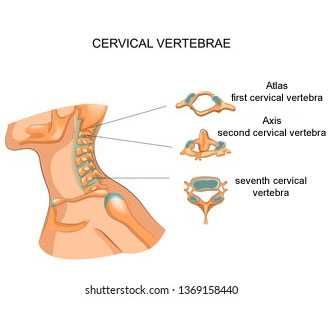 So here are 9 stretches for neck pain relief. Neck pain gets worse over time, starts causing headaches, migraines, difficulty turning, and could eventually lead to premature spinal aging.
So here are 9 stretches for neck pain relief. Neck pain gets worse over time, starts causing headaches, migraines, difficulty turning, and could eventually lead to premature spinal aging.
The following video will go over a four-minute spinal hygiene exercise routine, which covers six exercises. And these exercises will empower you to move well and begin the process of restoring function to the neck and upper spine. All the exercises are scalable to suit your health levels. Now the best way to understand the context of these exercises is to watch the video all the way through one time.
First, neck pain, what causes it?
The top part of the neck is called the cervical spine. That’s just a fancy term in Latin which literally means neck. The bone at the top, different to all the rest, gives 45 degrees of motion to the spine. That’s called Atlas. Underneath Atlas is another different bone called Axis, which has a pivot on it about the size of the typical little finger in an adult spine. And this top bone rotates around that. Then there are five other cervical vertebrae. The vertebrae have a vertebral body that is a block like structure which makes up the vertebral column. In between each vertebral body, there is a spacer. That spacer is commonly called a disc. The disc is filled with fluid. As we move, we actually pump fluid into and out of that disc. There is no direct blood supply to the disc. What that means is movement is vitally important for the cervical spine.
Now, the spacer or disc at the back has a hole. That hole has the official name of foramen, it’s a Latin word, it means hole. And out of the hole comes a bundle of nerves, and they spread to every cell, tissue, and organ in the body. If this disc, over a period, because of poor motion starts to narrow. You can’t see it quite as easily at the cervical levels, but if we come all the way down to the bottom of the spine just so you can see the mechanics. If this disc gets narrower, what happens to this hole? So, in other words, we don’t like discs that are getting narrow because that means more pressure on the nerve system.
Now, what causes neck pain?

Pressure on the nerves does not necessarily equate to pain. Loss of function in the spine does not necessarily equate to pain. But if you look at the cervical spine, if there is a bulge in the disc where I’m showing you the holes where the nerves come out, these are called foramen. There’s also a foramen or a hole going right down through the center.
So, if something happens to cause the disc to bulge, and if you come down lower, it’s easier to see, then obviously it can bulge back either on one side of the disc causing pain in one of the arms of the nerves coming out. If it is bulging on the other side, it could cause, in this case, this is the left hand side bundle of nerves to be under pressure. But if in the center, it bulges back, it causes pressure on the spinal cord. And that can cause a whole series of problems which are much more serious than just a bulge in the transverse process. So that’s one area where pain could be caused. Also, there are pain sensing receptors in the joints of the spine. So, you have one joint here between the vertebral discs.
We also have nociceptors or pain receptors in the facet joints, which are these joints here at the back. So, there’s a facet joint either side, and then obviously the larger intervertebral joint in between the vertebrae. Okay, so that’s a little overview of the spine. If there has been an imbalance here for a long time, we can identify those imbalances as nerve system imbalance which causes the structure to change, causes the muscular to change, is known in chiropractic as a subluxation. That is an overview of the structure of the spine and the neck specifically.
